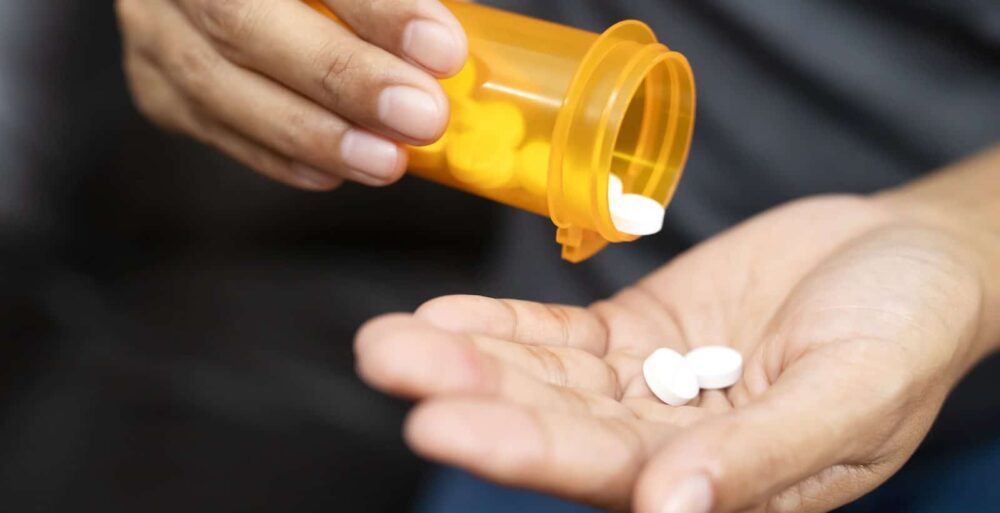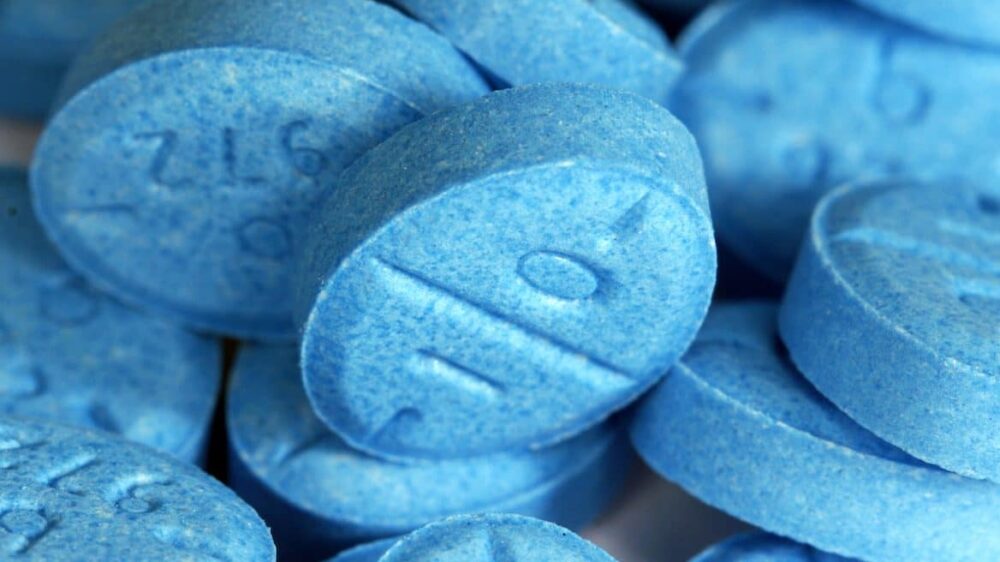Table of Contents
Clonazepam, the generic name of a brand-name drug called Klonopin, is typically prescribed by doctors to prevent and control seizures and panic disorders in patients. Belonging to a class of drugs called benzodiazepines, clonazepam works by calming the brain and nerves. This increases the effects of GABA, a neurotransmitter that blocks impulses between nerve cells in the brain. Because GABA is suspected of helping boost mood or have a calming, relaxing effect on the nervous system, someone with low levels of GABA may experience anxiety, mood disorders, epilepsy, or chronic pain.
While clonazepam was created to help people suffering from seizures and anxiety disorders, there is currently an abuse epidemic with this drug. This is primarily due to the “high” effect clonazepam can have on the user and the large risk of addiction and dependence when taking this controlled substance. In fact, there were 76,557 reported emergency room visits from abuse or misuse of clonazepam in 2011. This was an increase of 122 percent from 2004. This is particularly alarming because clonazepam increases health concerns for the users. In particular, it increases one’s risk of suicidal thoughts and behavior.
Despite the risks associated with taking this medication, the physical dependence on clonazepam can keep the user in a vicious cycle to avoid any withdrawal symptoms associated with detox. Furthermore, the “high” often felt when abusing this drug can be enough to keep someone in the addiction cycle, often taking more than prescribed when tolerance to this drug builds.
What is a Clonazepam High?
Even people taking clonazepam for legitimate health reasons can develop a tolerance and dependence upon taking the drug, resulting in a vicious cycle of addiction. While taking clonazepam may be helpful in the short term to calm down the brain and reduce anxiety, often, people take more than needed because of the dependent nature of this drug. And once tolerance builds, one will need to take more of the drug to feel the effects.
Furthermore, with the mild euphoria experienced when taking clonazepam, some people may start abusing the drug to continue feeling the “high” produced. This is a concern for the user because taking a higher dose than prescribed or more frequently than prescribed is dangerous and can lead to overdose. In addition, because this substance has a depressant effect on its users, the symptoms often experienced by overdosing involve slowed bodily functions.
Symptoms caused by clonazepam overdose include:
- Slurred speech
- Loss of consciousness
- Respiratory depression
- Loss of muscular coordination
- Delirium or profound confusion
- Coma
Additionally, combining clonazepam with other drugs/alcohol can greatly increase the intensity of these symptoms and the risk of overdose.
Withdrawal Symptoms when Detoxing off the Clonazepam High
The side effects of designer drugs and prescription drug abuse can be uncomfortable and dangerous. It is not recommended that clonazepam be utilized for long-term use because of its habit-forming tendencies. Once someone builds a tolerance to this drug, if doses don’t continually increase or the individual suddenly stops taking the drug, there is a heightened risk of experiencing a resurgence of symptoms that were the cause of taking the medication in the first place. Symptoms such as anxiety, panic, and insomnia are likely to return but often are experienced more intensely than originally felt before taking the medication. Furthermore, since the body begins to require the drug for normal functioning, people who stop taking clonazepam suddenly may grow violently ill due to benzodiazepine withdrawal.
Because there can be potentially fatal consequences from detoxing off clonazepam, it is vital that one using this drug under no circumstances try to stop taking the drug suddenly or without direct supervision and guidance from a medical professional. Shakiness, shortness of breath, nausea, mood swings, increased anxiety, agitation, and depression are common withdrawal symptoms experienced when detoxing from this controlled substance.
Other clonazepam withdrawal symptoms can include:
- Headaches
- Stomach pain
- Nausea
- Tremors
- Sweating
- Hallucinations
- Dizziness
- Fatigue
- Confusion
- Seizures
- Thoughts of suicide
Although rare, catatonia, a group of symptoms usually involving a lack of movement and communication, is a documented side effect of clonazepam.
Other physical symptoms of clonazepam withdrawal may include:
- Short-term memory loss
- Irregular heart rate or heart palpitations
- Sweating
- Increased blood pressure
- Impaired respiration
- Blurred vision
- Muscle spasms and cramps
- Impaired coordination and motor functions
- Diarrhea
- Feeling lightheaded
One of the most concerning psychological withdrawal symptoms experienced is increased suicidal ideation.
Other psychological symptoms when withdrawing from clonazepam include:
- Hallucinations
- Nightmares
- Mental confusion
- Short-term memory lapses
- Drug cravings
- Trouble feeling pleasure
- Difficulties concentrating
- Panic
- Lack of motivation
- Feeling “out of it” and disconnected from reality
- Anger and hostility
- Drastic mood swings
Because clonazepam has a long half-life of 18-50 hours, withdrawal symptoms typically will not start until 1-3 days after the last dose or when the drug stops being effective. Early withdrawal usually lasts 2-4 days, with acute withdrawal symptoms peaking around 2 weeks and lasting anywhere from a week to a month after stopping clonazepam. Things that can affect the intensity of withdrawal symptoms experienced include age, dosage taken, simultaneous abuse of other substances, co-occurring mental health disorders, length of time taking benzos, genetics and personal physiology (family history of addiction, etc.), and environmental factors (high-stress surroundings, etc.).
How to Get Help for an Addiction to the Clonazepam High
Because there is a high potential for serious health risks or fatality when detoxing off clonazepam, one must seek guidance under the care of a medical professional. A medical-guided detox ensures trained professionals can monitor the individual’s detox to help control and prevent serious withdrawal symptoms. In addition, because quitting clonazepam suddenly can cause a serious range of health concerns to the user, a trained medical professional can guide in tapering the individual off the substance, minimizing the potential physical and emotional effects often experienced with detox.
After detox is utilized and the individual feels more physically stable, it would be beneficial for the individual to go through a more comprehensive substance abuse treatment program that can address the emotional aspects of why the individual needed clonazepam in the first place. By addressing the core reason why this substance was used and finding healthier coping mechanisms, the individual will be put in a greater position to maintain long-term sobriety. With this being stated, therapy and psychological support are vitally important to minimize potential relapse in the future.
The time to get help is now. Your well-being, health, and sobriety are essential to living the fulfilling life you deserve. Whether you are seeking addiction recovery in Austin, rehab in Dallas, or recovery services elsewhere in Texas, reach out to our team of specialists today. We will help set you on a path of long-term sobriety, free from the bonds of drug addiction.
Sources:
Infinite Recovery has strict sourcing guidelines and relies on peer-reviewed studies, academic research institutions, and medical associations for our references. We avoid using tertiary references as our sources. You can learn more about how we source our references by reading our editorial guidelines and medical review policy.
- Web MD. Klonopin Oral: Uses, Side Effects, Interactions, Pictures, Warnings & Dosing – WebMD. Accessed June 24, 2022. https://www.webmd.com/drugs/2/drug-920-6006/klonopin-oral/clonazepam-oral/details
- Stuart A. GABA: Uses and Risks. WebMD. Published September 5, 2021. Accessed June 24, 2022. https://www.webmd.com/vitamins-and-supplements/gaba-uses-and-risks
- Substance Abuse and Mental Health Services Administration. The DAWN Report: Highlights of the 2011 Drug Abuse Warning Network (DAWN) Findings on Drug-Related Emergency Department Visits. Published February 22, 2013. Accessed June 24, 2022. https://www.samhsa.gov/data/sites/default/files/DAWN127/DAWN127/sr127-DAWN-highlights.htm
- Smith M. Catatonia: Symptoms, Causes, and Treatment. WebMD. Published January 26, 2021. Accessed June 24, 2022. https://www.webmd.com/schizophrenia/what-is-catatonia
















